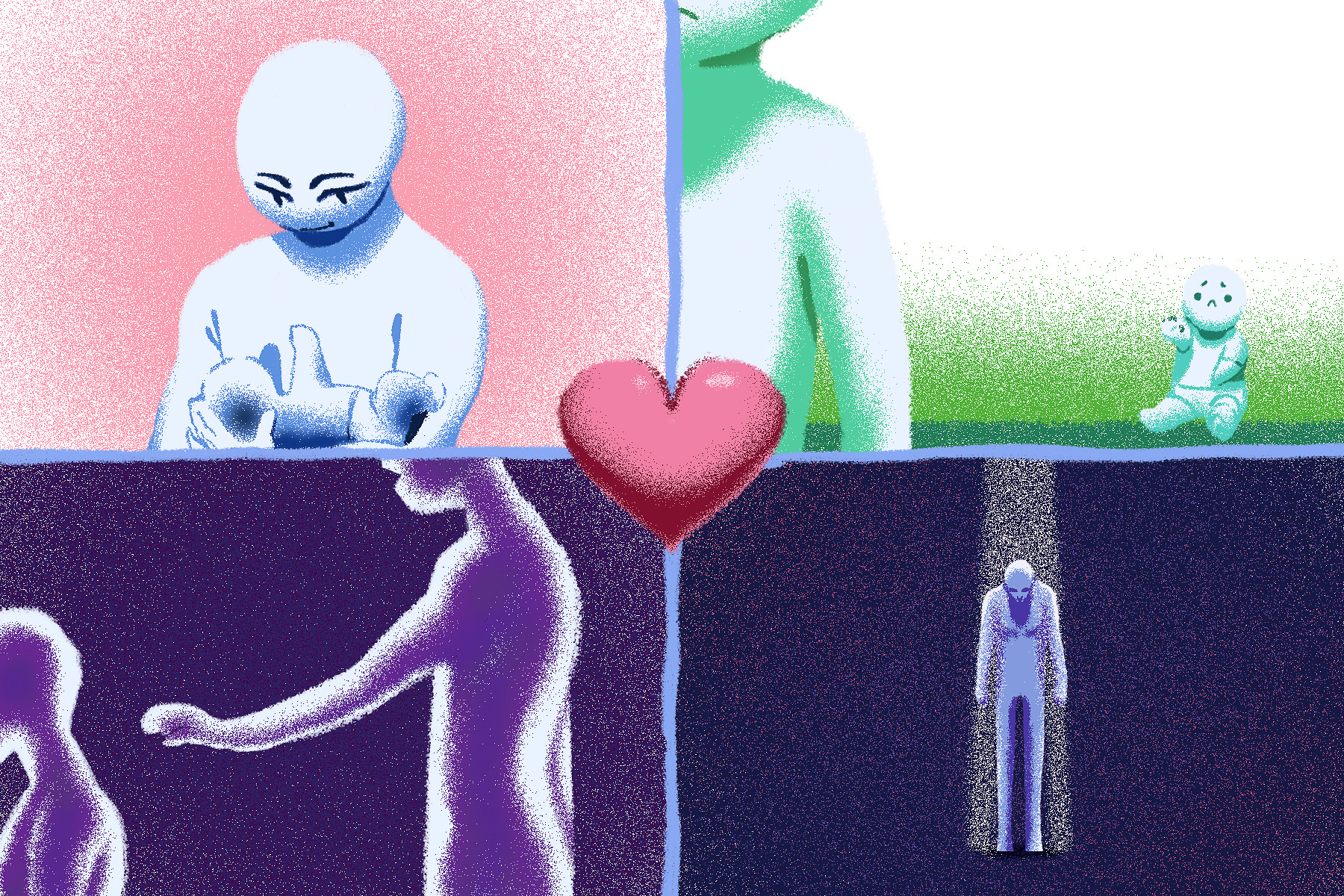Attachment theory is a psychological concept that was developed over time by psychologists John Bowlby and Mary Ainsworth. As described by Bowlby, attachment is the “lasting psychological connectedness between human beings.” In simpler terms, it is one’s bond to another person.
Attachment begins at birth and develops during childhood, one of the most critical periods of a person’s life. An individual’s first attachment is to their primary caregiver — a relationship that will impact how that person forms connections with all other people later on in their life, especially romantic relationships, thus molding a particular attachment style.
According to the theory, there are four main attachment styles that people develop and maintain throughout adulthood. The four attachment styles include secure attachment, dismissive-avoidant attachment, anxious-preoccupied attachment and fearful-avoidant attachment, which is also called disorganized attachment.
1. Secure
Secure attachment forms when a child has a balanced relationship with their primary caregiver(s). Caregivers likely use the authoritative parenting style, which is characterized by responsiveness to their child, high expectations, warmth, support, clear boundaries and positive discipline.
During childhood, the secure attachment style is evident in children who enjoy spending time with their parents and will seek them if they feel frightened or upset. While securely attached children have a tight bond with their parents, they still have the self-autonomy to separate from their parents.
In adulthood, securely attached individuals often have great trust and confidence in their relationships. They feel connected to their partner and can express their emotions. Securely attached people will also feel comfortable depending on their partner in the relationship, while each party also maintains an appropriate level of independence. A secure relationship also has space for each person to both ask for and provide support for the other.
2. Dismissive-Avoidant
The dismissive-avoidant attachment style oftentimes develops as a result of the authoritarian parenting style, which is defined by strict rules, high expectations, harsh punishments, obedience-oriented guidance and minimal warmth or responsiveness to the child.
Unlike securely attached children, dismissive-avoidant children do not prefer their parents to other people and won’t seek comfort from their caregiver when they are in distress. Children may accept some attention from their parents but won’t try to get it or they may even avoid their parents altogether.
During adulthood, individuals with the dismissive-avoidant attachment style may experience difficulty with emotional closeness and intimacy in their relationships. They may feel reluctant to share thoughts and feelings with other people and value their independence.
Dismissive-avoidants may feel uncomfortable with others who try to grow closer to them or share their feelings, and they might make an effort to steer away from emotional vulnerability. They require their own time in a relationship and may need a bit of extra space and patience from their partner before they’re ready to open up.
A great example of an avoidant attachment is the character Elsa from the Disney film “Frozen.” Elsa is used to concealing her emotions, physically shutting other people out as well as fleeing in response to her sister’s desire for an emotional connection. She is uncomfortable with closeness and seeks to be independent.
3. Anxious-Preoccupied
The anxious-preoccupied attachment style could result from another type of insecure parenting style, but according to research by Procedia, there is no specific parenting style that correlates with it. However, children may have an anxious attachment to caregivers whose behavior is unpredictable and whose affection is inconsistent. Such parents will be available and attuned to the needs of their child one minute but distant the next.
Children with the anxious attachment style are extremely distrusting of people other than their parents, but they may not feel comforted by the presence of their caregivers during distress.
Anxious-preoccupied attachment in adults is often associated with a negative self-image and a heavy attachment to the partner in relationships. The attachment style seeks their partner’s approval and a great amount of responsiveness, but the accompanying fear of abandonment can often manifest itself as clinginess. Anxiously attached adults would benefit from attention, responsiveness and reassurance from their partner in a relationship.
Think Anna from “Frozen.” The princess quickly attaches herself to Prince Hans upon their first meeting. Anna also repeatedly seeks out her sister Elsa, looking for her attention and connection while Elsa continues to pull away. Another example of the anxious-preoccupied attachment style can be seen in Rachel Berry from “Glee.” She constantly tests Finn’s loyalty and craves his attention. At one point, Rachel even gives Quinn the mission of seeing if Finn still has feelings for her, even though Finn is dating Rachel.
4. Fearful-Avoidant
Similar to the anxious-preoccupied attachment style, there was no recorded correlation between the fearful-avoidant — or disorganized — attachment style and a specific parenting style. However, as fearful-avoidant attachment has characteristics of both dismissive-avoidant and anxious-preoccupied, it could be a mixed bag of the previously mentioned parenting styles.
Inconsistency is common, with the caregiver being both feared and reassuring to their child. Neglectful or uninvolved parenting could contribute to the attachment style in which parents are indifferent, unresponsive and lacking in rules, but children still have to rely on their parents for basic needs.
In childhood, fearful-avoidant people show a confusing combination of reactions toward their parents. They may avoid or resist their caregiver, or they just act apprehensive and dazed around them.
The push and pull method of desiring another but pulling away remains present in adults with fearful-avoidant attachment. They may want emotional closeness with their partner but push the other way as a result of difficulties trusting another.
Fearful-avoidants may push relationships away to prevent themselves from getting hurt. Again, patience, time and reassurance from their partners are necessary to aid in the process of trust.
Santana Lopez from “Glee” could exemplify the fearful-avoidant attachment style in her turbulent approach to relationships, especially with Brittany, who she wants to be with but also pushes away at various points throughout the show. For example, when Santana hooks up with Brittany, she rudely tells her she’s only doing so because Puck is in juvenile detention, but Santana later reveals that she actually has feelings for Brittany.
Understanding the four different attachment styles and which best describes your own behaviors may help you to both better your current relationships and recognize the reasoning behind your responses to them.

















